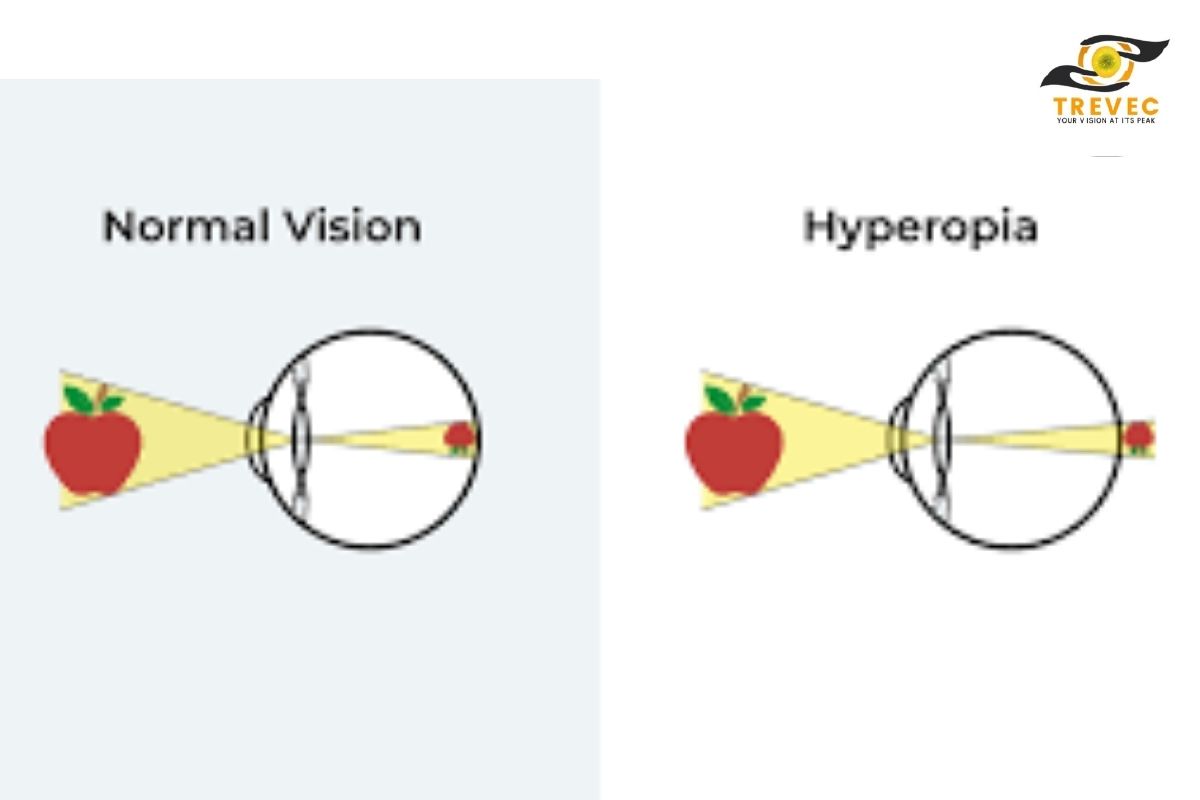Complications of Untreated Farsightedness (Hyperopia): Why Early Detection Matters
Farsightedness (Hyperopia) may seem like a minor vision problem, especially when the symptoms appear mild. However, when left untreated, it can lead to serious complications that affect vision, eye health, learning, and quality of life. Understanding these risks highlights the importance of regular eye exams and prompt treatment.
-
Chronic Eyestrain (Asthenopia)
A Constant struggle to focus on near objects can cause headaches, tired eyes, burning sensation, and difficulty concentrating.
-
Headaches and Migraines
Untreated hyperopia often results in frontal headaches or migraines after reading or computer work.
-
Strabismus (Crossed Eyes)
In children, untreated hyperopia can lead to accommodative esotropia, where one eye turns inward while trying to focus.
-
Amblyopia (Lazy Eye)
If one eye provides clearer vision, the brain may ignore the weaker one, leading to amblyopia (lazy eye).
-
Reduced Academic and Work Performance
Children may face learning challenges, while adults struggle with focus and efficiency in close work.
-
Emotional and Social Impact
Vision challenges can cause frustration, low self-esteem, and social withdrawal, especially in children.
-
Increased Risk of Accidents
Blurred near vision may cause errors in daily tasks such as reading labels, handling tools, or recognizing faces.
Treatment Options for Farsightedness (Hyperopia): Glasses, Contacts, and Surgery
Living with hyperopia doesn’t have to limit your lifestyle. Thanks to modern eye care solutions, people with farsightedness can enjoy clear, comfortable vision.
Non-Surgical Treatments
- Eyeglasses: Easiest and most common correction using convex (plus) lenses.
- Contact Lenses: Provide a wider field of vision; options include soft, RGP, and multifocal lenses.
Surgical Treatments
- LASIK: Reshapes the cornea, suitable for mild to moderate hyperopia.
- PRK: Similar to LASIK but involves removing the outer corneal layer, ideal for thin corneas.
- Lens-based procedures: Refractive lens exchange or intraocular lenses for severe cases.
Lifestyle Management
– Take breaks from close-up tasks (20-20-20 rule).
– Maintain good lighting when reading or working.
– Eat a balanced diet rich in vitamin A, C, and omega-3s for eye health.
Conclusion
Farsightedness (Hyperopia) is more than just blurry near vision; it can lead to long-term complications if ignored. Early detection and treatment through glasses, contact lenses, or surgery can prevent eyestrain, learning difficulties, and permanent vision problems.
Whether through glasses, contacts, or surgery, treatment for hyperopia is effective and widely accessible. Consulting an eye specialist helps in choosing the most suitable option.
At TREETOP VISION EYE CENTRE, we offer expert eye screening, personalized eye care, and guidance to help you stay ahead of complications. Don’t wait for symptoms; book your eye exam today.
Your vision is worth protecting. Let us help you keep it crystal clear.
TREVEC CARES!!!

Farsightedness

